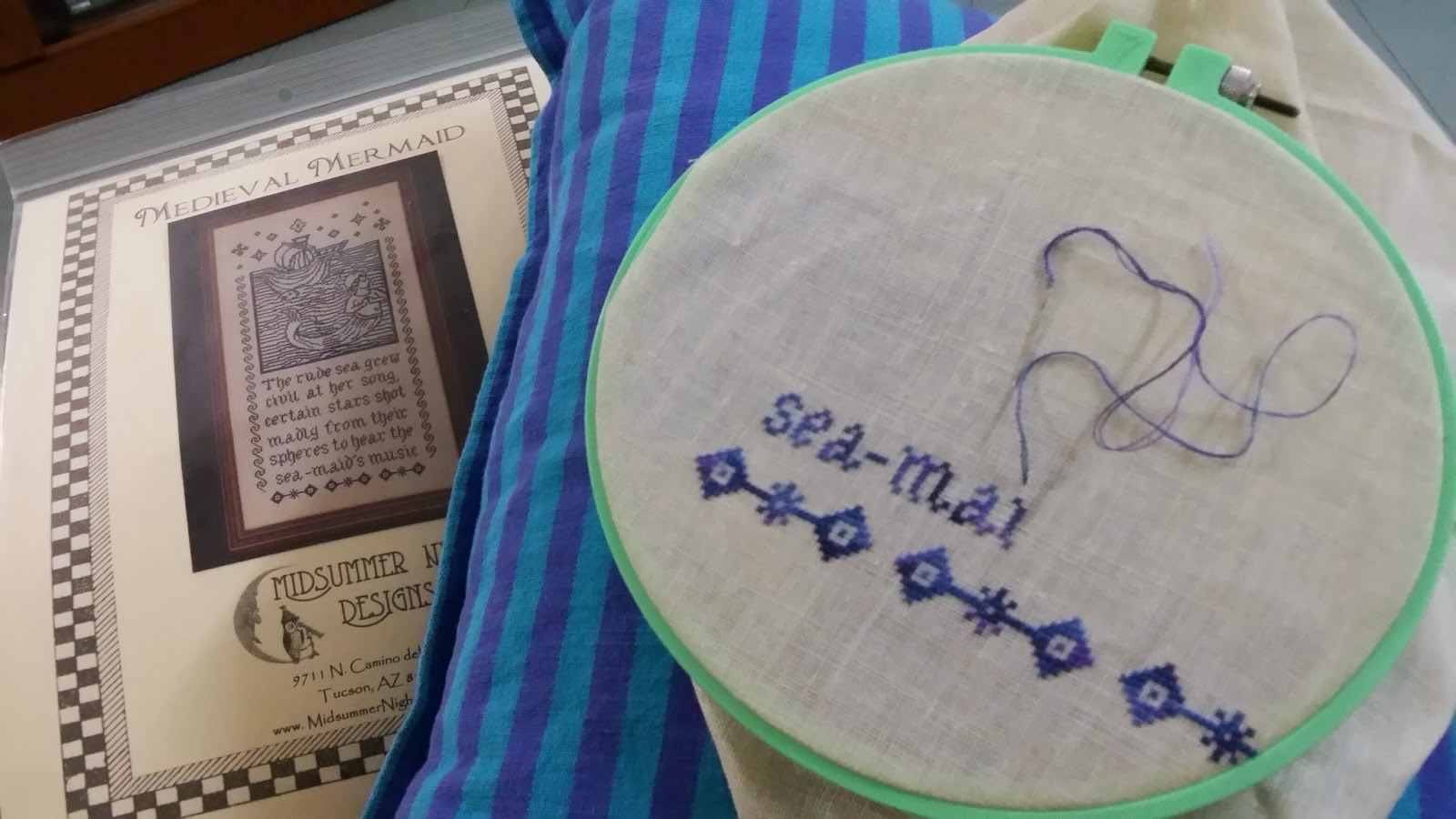I'm too lazy to split my posts into two separate topics, so I'm going to do this alphabetically.
First on the agenda:
The Stitching Bandits Chatelaine Challenge
This is a SAL cooked up by my dear sisters Joysze and the Sexy Fairy, who, after years of cajoling me into stitching my first Chatelaine piece (and me trying to make up my mind for the same period of time), in order to bolster both my ambition and will to stitch this, finish this and frame this!
So after many times and countless emails and telephone conversations, which featured Joysze at her persuasive best, me waffling over this piece or that, and figuring out the currency conversions and saving up for it, we finally decided that if I were to stitch only one Chatelaine piece in my life ("It won't be your only one," she said with conviction), this would be it. Since the decision to do this apparently took about the same amount of time and patience on their part to wait for Halley's Comet, they decided to get everyone along on the ride. I do have the best stitching sisters in the world, and I'm so thankful for it!!! So... if you're working on a Chatelaine or plan to start one soon, please join in, because we're throwing in a gift certificate, which will be given away to a lucky winner of a raffle, at the end of the challenge.
Next, the Wipocalypse post
.jpg) |
| Wisdom, by Joan Elliott |
I typically dislike stitching brown, especially the dull dusty colours, but this has been very interesting. While Joan Elliott has a great knack for colours like blues, teals, greens and purples), and has produced more geishas in recent years, I keep finding myself going back to her earlier ones like this -- probably because the face seems more artistic than realistic, and her layering of the girl's fabric and understanding of Japanese cotton motifs is excellent. Btw, since I love working in sets, I'm thinking about stitching Beauty (gold and pink kimono) and Grace(purple kimono) after this, and hanging them together in a row. Any thoughts on this would be greatly appreciated!
Finally, this next part is not a stitching subject but an embroidery subject. One of my brothers is (finally!!!) getting married to his sweetheart, and I've been rather excited about it. From the planning to the finish, it's going to be busy, and along with it comes the ever-fretful question: what to wear? Well, the choices are between a cocktail dress (not yet purchased), a Chinese qipao (also not yet purchased) or should I give a nod to my Straits Chinese heritage, lose some serious weight around the middle and squeeze my big balloons into this nyonya kebaya?
OK, before we proceed further, here are some references made simple:
The garment in question can be made to end anywhere from the hip to the knee, but it is onlyalways a top! obviously, a corset or a camisole is worn underneath to prevent, erm... nipplage. The most luxurious ones are made of Swiss voile (this one that I took a pic of cost a whopping RM2,800, or USD900!!)
The flowers are largely traditional motifs (peonies, chrysanthemums, lilies and some butterflies are traditional, roses (which come up off and on) are not but are also popular - these are then carefully embroidered into the fabric, and then the lacy part is essentially elaborate cutwork. So... a genuine piece is practically a work of art that goes on your body. This one has traditional colours (we like blues and teals and oranges), with peonies and some butterflies in it.
The blouse has no buttons, but is fastened together with jewelled pins. The pins can be the same size, and be connected with a chain like this:
Or they can come in a set of 2-3 pins, typically called "mother and child" -- the "mother" is the biggest pin, obviously, and the child/children are represented by the small ones. Like this!
It is complemented at the bottom with a batik sarong, either made of cotton or silk (I prefer the latter for formal occasions). The sarong is either a) a very large rectangle of cloth that the wearer has to fold and pleat and tuck securely into her waist (my preferred method) without any pins or accoutrements, or b) the rectangle is sewn at the sides together to form a large tube (still loose), which is cinched by a belt - which is traditionally made of silver.
Put together, you get an ensemble like this: (I pinched the images off the Internet)... oo look, pretty aunties in beautiful nyonya kebayas.
Addendum: on Straits Chinese:
these are descendants of Chinese people who came to Malaya as traders, before the large wave of immigrants left their Chinese motherland out of poverty, desperation and starvation to work here, largely as manual labourers or tin miners.
As the ancestors of the Straits Chinese can be considered the "first wave" of immigrants, and they were mainly dudes, they married into the local population and assimilated local culture into Chinese tradition. The result of this is a unique combination of attire (see above), speech (it's the closest thing to pidgin Chinese), cuisine (complicated to cook, artfully balanced and entirely addictive) that is still practised today, even though the ethnic subset of Straits Chinese is on a decline. The closest comparison to Straits Chinese that I can give would be the Creoles of America -- never belonging 100% to either or any of their original "ethnic ingredients", and creating a culture entirely of their own.
Speaking of cuisine.... I'm hungry. But to get into that sort of garment, it's going to be a salad, and anything else. Grrrr!!!! Until next time, readers!
















